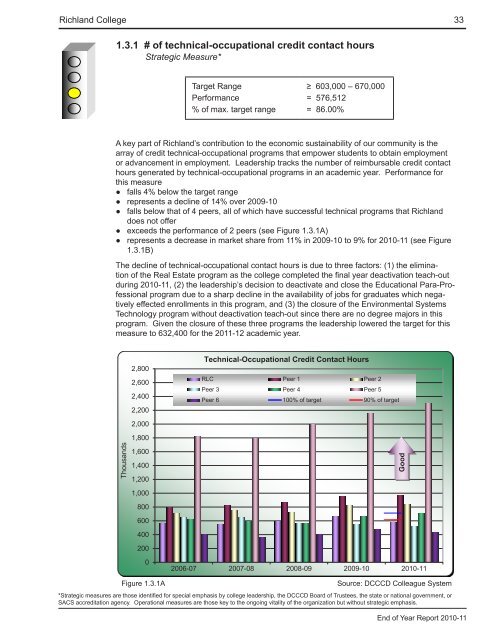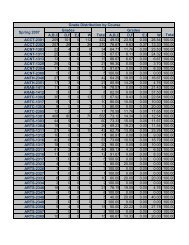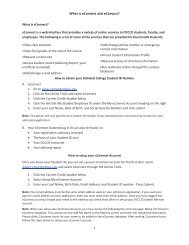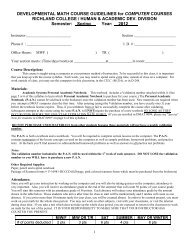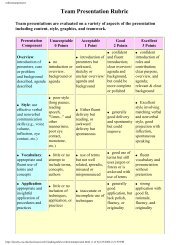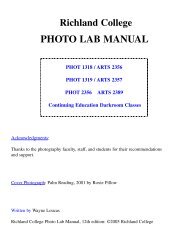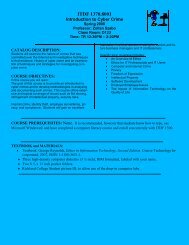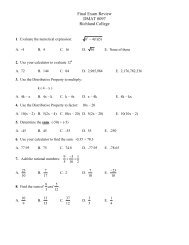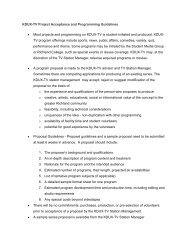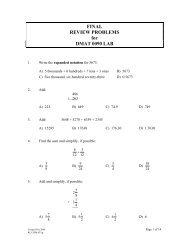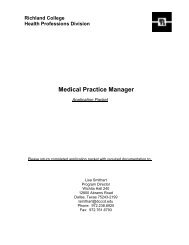End of Year Report - Richland College
End of Year Report - Richland College
End of Year Report - Richland College
Create successful ePaper yourself
Turn your PDF publications into a flip-book with our unique Google optimized e-Paper software.
KPI 1.3 Provide business and industry workforce training<br />
<strong>Richland</strong> <strong>College</strong> 33<br />
1.3.1 # <strong>of</strong> technical-occupational credit contact hours<br />
Strategic Measure*<br />
Target Range<br />
Performance<br />
% <strong>of</strong> max. target range<br />
≥ 603,000 – 670,000<br />
= 576,512<br />
= 86.00%<br />
A key part <strong>of</strong> <strong>Richland</strong>’s contribution to the economic sustainability <strong>of</strong> our community is the<br />
array <strong>of</strong> credit technical-occupational programs that empower students to obtain employment<br />
or advancement in employment. Leadership tracks the number <strong>of</strong> reimbursable credit contact<br />
hours generated by technical-occupational programs in an academic year. Performance for<br />
this measure<br />
●●<br />
falls 4% below the target range<br />
●●<br />
represents a decline <strong>of</strong> 14% over 2009-10<br />
●●<br />
falls below that <strong>of</strong> 4 peers, all <strong>of</strong> which have successful technical programs that <strong>Richland</strong><br />
does not <strong>of</strong>fer<br />
●●<br />
exceeds the performance <strong>of</strong> 2 peers (see Figure 1.3.1A)<br />
●●<br />
represents a decrease in market share from 11% in 2009-10 to 9% for 2010-11 (see Figure<br />
1.3.1B)<br />
The decline <strong>of</strong> technical-occupational contact hours is due to three factors: (1) the elimination<br />
<strong>of</strong> the Real Estate program as the college completed the final year deactivation teach-out<br />
during 2010-11, (2) the leadership’s decision to deactivate and close the Educational Para-Pr<strong>of</strong>essional<br />
program due to a sharp decline in the availability <strong>of</strong> jobs for graduates which negatively<br />
effected enrollments in this program, and (3) the closure <strong>of</strong> the Environmental Systems<br />
Technology program without deactivation teach-out since there are no degree majors in this<br />
program. Given the closure <strong>of</strong> these three programs the leadership lowered the target for this<br />
measure to 632,400 for the 2011-12 academic year.<br />
2,800<br />
2,600<br />
2,400<br />
2,200<br />
Technical-Occupational Credit Contact Hours<br />
RLC Peer 1 Peer 2<br />
Peer 3 Peer 4 Peer 5<br />
Peer 6 100% <strong>of</strong> target 90% <strong>of</strong> target<br />
2,000<br />
Thousands<br />
1,800<br />
1,600<br />
1,400<br />
1,200<br />
Good<br />
1,000<br />
800<br />
600<br />
400<br />
200<br />
0<br />
2006-07 2007-08 2008-09 2009-10 2010-11<br />
Figure 1.3.1A<br />
Source: DCCCD Colleague System<br />
*Strategic measures are those identified for special emphasis by college leadership, the DCCCD Board <strong>of</strong> Trustees, the state or national government, or<br />
SACS accreditation agency. Operational measures are those key to the ongoing vitality <strong>of</strong> the organization but without strategic emphasis.<br />
<strong>End</strong> <strong>of</strong> <strong>Year</strong> <strong>Report</strong> 2010-11


